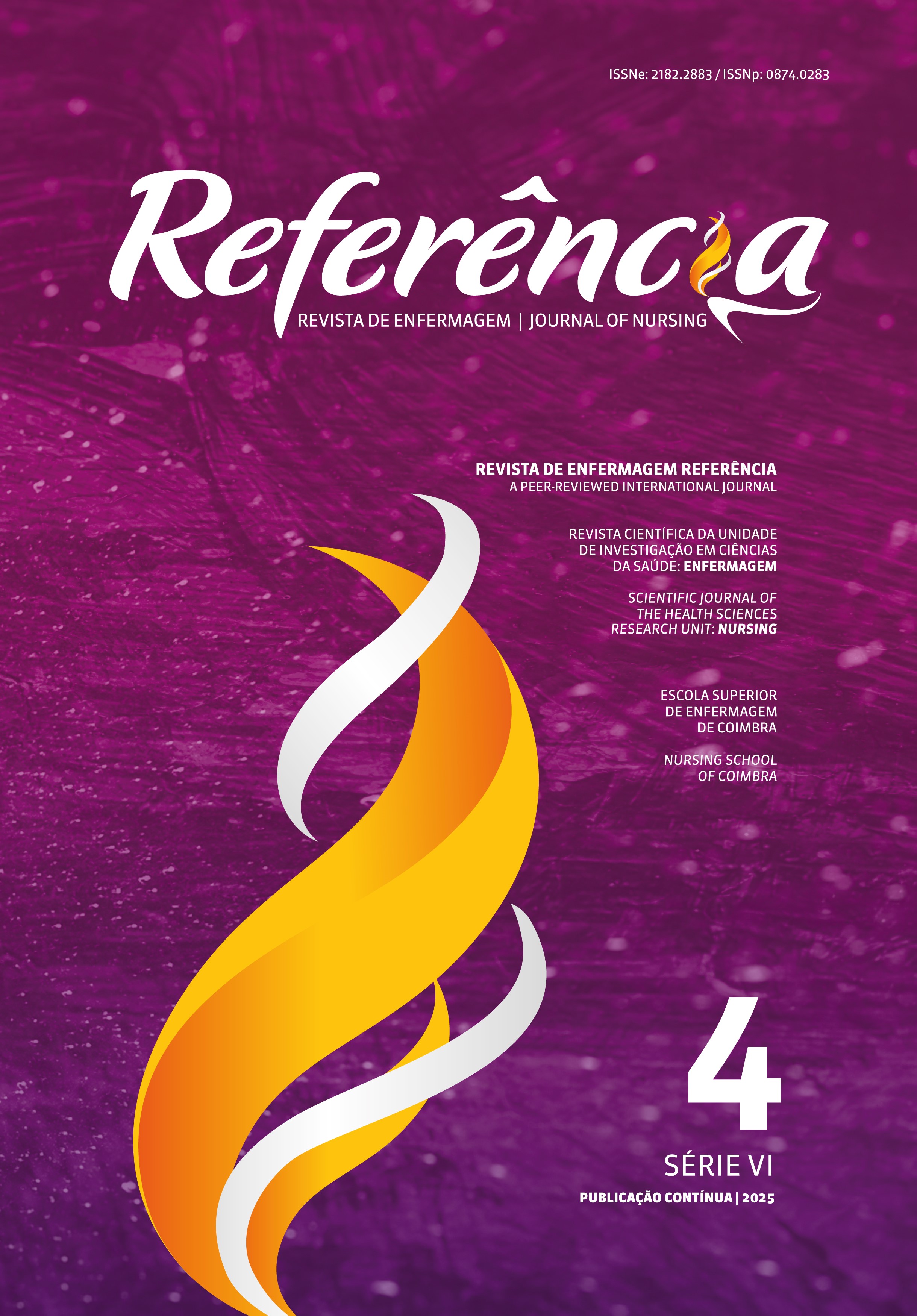The effect of cryotherapy on knee surface temperature after total knee arthroplasty: A quasi-experimental study
DOI:
https://doi.org/10.12707/RVI23.68.31331Keywords:
knee arthroplasty, cryotherapy, skin temperatureAbstract
Background: Cryotherapy is used during the postoperative phase of total knee arthroplasty to reduce pain, inflammation, blood loss, cell metabolism, and edema. The therapeutic effects of cryotherapy are achieved when skin surface temperatures are at or below 15ºC.
Objective: To determine the effect of cryotherapy on the skin surface temperature of a knee undergoing total knee arthroplasty using different interfaces.
Methodology: A 1X4X6 quasi-experimental and factorial study was conducted, comparing one modality of cryotherapy (ice bag), four interfaces (Robert Jones-type bandage, tubular mesh bandage, thin pillowcase-type cloth, and non-woven compress), and six periods of cryotherapy administration (10,20, 30, 40, 50, and 60 minutes) on a knee undergoing total knee arthroplasty. The sample consisted of 60 participants randomly assigned to one of the four experimental groups (interfaces). A total of 720 cryotherapy treatments were administered.
Results: There was no decrease in skin surface temperature to therapeutic levels in any of the experimental groups. The mean values obtained were: Robert Jones-type bandage = 34.13ºC; tubular mesh bandage = 23.90ºC; thin pillowcase-type cloth = 22.84ºC, and non-woven compress = 21.92ºC.
Conclusion: Under the experimental conditions studied, cryotherapy had no therapeutic effect.
Downloads
References
Agency for Healthcare Research and Quality (2022). Total-knee-replacement-statistics. https://idataresearch.com/total-knee-replacement-statistics-2017-younger-patients-driving-growth/
Aggarwal, A., Adie, S., Harris, I. A., & Naylor, J. (2023). Cryotherapy following total knee replacement. Cochrane Database System Revue, 9(9), CD007911. https://doi.org/10.1002/14651858
American Academy of Orthopaedic Surgeons (2020). Total knee replacement. https://orthoinfo.aaos.org/en/treatment/total-knee-replacement/
Bélanger, A. Y. (2015). Therapeutic electrophysical agents: Evidence behind practice (3ª ed.). Lippincott Williams & Wilkins.
Cameron, M. (2019). Agentes físicos en rehabilitación: Práctica basada en la evidencia (5ª ed.). Elsevier.
Coutinho, C. (2019). Metodologia de investigação em ciências sociais e humanas: Teoria e prática (2ª ed.). Edições Almedina.
Demoulin, C., Brouwers, M., Darot, S., Gillet, P., Crielaard, J. M., & Vanderthommen, M. (2012). Comparison of gaseous cryotherapy with more traditional forms of cryotherapy following total knee arthroplasty. Annals of Physical and Rehabilitation Medicine, 55(4), 229–240. https://doi.org/10.1016/j.rehab.2012.03.004
Gregório, O., Cavalheiro, R., Tirelli, R., Fréz, A., Ruaro, M., & Ruaro, J. (2014). Influence of cryotherapy application time on skin sensitivity. Revista Dor, 15(1), 9-12. https://doi.org/10.5935/1806-0013.20140003
Ibrahim, T., Ong, S. M., & Taylor, G. J. (2005). The effects of different dressings on the skin temperature of the knee during cryotherapy. The Knee, 12(1), 21–23. https://doi.org/10.1016/j.knee.2004.02.006
Janwantanakul, P. (2004). Different rate of cooling time and magnitude of cooling temperature during ice bag treatment with and without damp towel wrap. Physical Therapy in Sport, 5(3), 156–161. https://doi.org/10.1016/j.ptsp.2004.02.004
Kanlayanaphotporn, R., & Janwantanakul, P. (2005). Comparison of skin surface temperature during the application of various cryotherapy modalities. Archives of Physical Medicine and Rehabilitation, 86(7), 1411–1415. https://doi.org/10.1016/j.apmr.2004.11.034
Knight, K. (2000). Crioterapia no tratamento das lesões esportivas. Editora Manole.
Love, H. N., Pritchard, K. A., Hart, J. M., & Saliba, S. A. (2013). Cryotherapy effects, part 1: Comparison of skin temperatures and patient-reported sensations for different modes of administration. International Journal of Athletic TherapY &Training, 18(5), 22–25. https://doi.org/10.1123/ijatt.18.5.22
Marôco, J. (2018). Análise estatística com o SPSS statistics (7ª ed.). ReportNumber.
Merrick, M. A., Jutte, L. S., & Smith, M. E. (2003). Cold modalities with different thermodynamic properties produce different surface and intramuscular temperatures. Journal of Athletic Training, 38(1), 28–33. https://www.ncbi.nlm.nih.gov/pmc/articles/PMC155508/
Ostrowski, J., Purchio, A., Beck, M., & Leisinger, J. (2019). Effectivenessof salted ice bag versus cryocompression on decreasing intramuscular and skin temperature. Journal of Sport Rehabilitation, 28(2), 120–125. https://doi.org/10.1123/jsr.2017-017
Santos, V., Cardoso, C., Figueiredo, C., & Macedo, C. (2015). Effect of cryotherapy on the ankle temperature in athletes: Ice pack and cold water immersion. Fisioterapia em Movimento, 28(1), 23–30. https://doi.org/10.1590/0103-5150.028.001.AO02
Tassignon, B., Serrien, B., Pauw, K., Baeyens, J.-P., & Meeusen, R. (2018). Continuous knee cooling affects functional hop performance: A randomized controlled trial. Journal of Sports Science & Medicine, 17(2), 322–329.
Thacoor, A., & Sandiford, N. A. (2019). Cryotherapy following total knee arthroplasty: What is the evidence? Journal of Orthopaedic Surgery, 27(1), 1-6. https://doi.org/10.1177/2309499019832752
Tomchuk, D., Rubbley, M. D., Holcomb, W. R., Guadagnoli, M., & Tarno, J. M. (2010). The magnitude of tissue cooling during cryotherapy with varied types of compression. Journal of Athletic Training, 45(3), 230–237. https://doi.org/10.4085/1062-6050-45.3.230
Ueyama, M., Takamura, D., Nakajima, R., Harada, J., Iwata, K., Maekawa, T., Iwaki, K., & Yasuda, T. (2018). Alterations in deep tissue temperature around the knee after total knee arthroplasty: Its association with knee motion recovery in the early phase. Physical Therapy Research, 21(1), 1–8. https://doi.org/10.1298/ptr.E9931






















